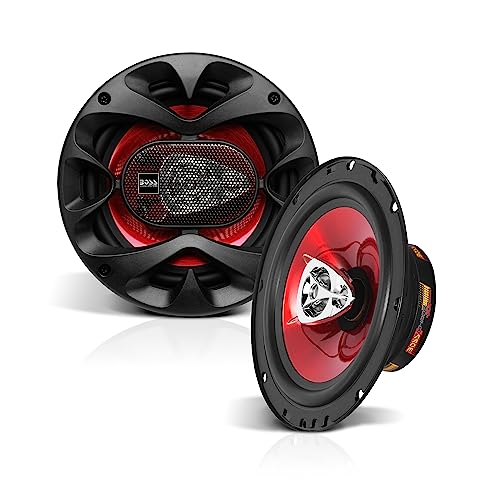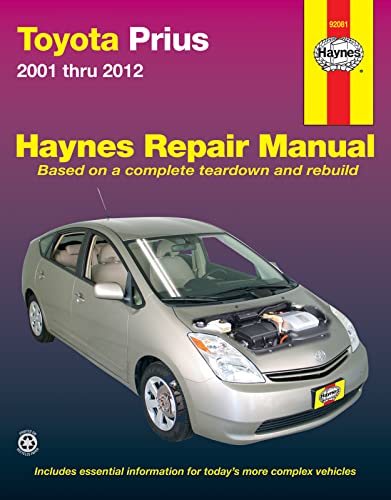As an Amazon Associate, I earn from qualifying purchases
If you own a Toyota Tundra or are thinking about getting one, you might have come across the term “Auto LSD.” But what exactly does it mean, and why should you care?
Understanding Auto LSD can make a big difference in how your truck handles tough roads and slippery conditions. This article will break down everything you need to know about Auto LSD in your Toyota Tundra, helping you get the most out of your vehicle’s performance and safety.
Keep reading to discover how this feature works and why it matters to you.
Auto Lsd In Toyota Tundra
The Toyota Tundra is known for its strength and off-road ability. One feature that helps it handle tough terrain is the Auto LSD. This system improves traction and stability on slippery or uneven surfaces. It makes driving safer and more confident in various conditions.
Basic Function
Auto LSD stands for Automatic Limited Slip Differential. It helps the wheels turn at different speeds. This is useful when driving around corners. The system sends power to the wheel with more grip. It prevents one wheel from spinning too fast and losing control.
How It Works
The system uses sensors to monitor wheel speed. When it detects a wheel slipping, it activates the LSD. It applies braking force to the slipping wheel. This transfers power to the other wheel with better traction. The process happens quickly and smoothly.
Key Components
The main parts of Auto LSD include the differential, sensors, and control unit. The differential allows wheels to spin at different speeds. Sensors track wheel movement and speed. The control unit processes data and controls braking. Together, these parts improve grip and vehicle control.
Benefits Of Auto Lsd
The Auto LSD in a Toyota Tundra offers several key benefits. It helps improve driving safety and vehicle control. This system adjusts power to the wheels automatically. It works well on different road surfaces and conditions. Below are some main advantages of having Auto LSD.
Improved Traction
Auto LSD helps prevent wheel slip during acceleration. It sends power to the wheel with the most grip. This feature is useful on wet or slippery roads. It reduces chances of getting stuck or losing control. Drivers experience smoother starts and better grip.
Enhanced Stability
Auto LSD improves the truck’s balance during turns. It distributes torque to maintain steady movement. This reduces skidding or spinning of wheels. The vehicle feels more stable on curves and uneven surfaces. It increases driver confidence and control.
Better Off-road Performance
The system helps tackle rough and uneven terrain. It allows the truck to move forward even if one wheel slips. Auto LSD adjusts power to wheels that have better traction. This makes off-road driving easier and safer. It supports climbing hills, mud, or loose gravel.
Auto Lsd Vs Traditional Lsd
The Auto LSD and Traditional LSD are two types of limited-slip differentials found in vehicles like the Toyota Tundra. Both help improve traction by controlling how power is sent to the wheels. Understanding their differences helps drivers choose the right option for their needs. Each has unique features and works best in different situations.
Operational Differences
Traditional LSD uses mechanical parts to limit wheel spin. It locks the wheels together when one loses grip. This helps the other wheel get more power.
Auto LSD works with the car’s brakes and computer system. It applies brake pressure to the slipping wheel. This sends power to the wheel with better traction without locking.
Pros And Cons
Traditional LSD offers strong traction on rough terrain. It is reliable and simple but may cause more tire wear. It can be noisy during sharp turns.
Auto LSD is smooth and quiet. It provides traction without full wheel lock. It is easier on tires but may not perform as well off-road.
Use Case Scenarios
Traditional LSD suits off-road driving and heavy towing. It works well on uneven surfaces and mud.
Auto LSD is better for city driving and light off-road. It improves safety in rain and snow by preventing wheel spin.
Credit: www.tundratalk.net
Traction Control And Auto Lsd
Traction Control and Auto LSD work together to keep your Toyota Tundra steady on the road. These systems help manage wheel spin and maintain grip. This makes driving safer and smoother, especially on slippery surfaces.
System Integration
Auto LSD links with the traction control system in the Toyota Tundra. They share information about wheel speed and road conditions. Traction control uses this data to adjust braking and power. Auto LSD helps by locking the wheels when one slips. This teamwork improves overall vehicle stability.
Role In Safety
Traction Control and Auto LSD reduce the risk of losing control. They prevent the wheels from spinning too fast on slippery roads. This helps the driver keep control during sudden turns or stops. These systems also work to avoid skidding. They improve safety for both driver and passengers.
Driving Conditions
These systems perform best on wet, icy, or uneven roads. Auto LSD helps when one wheel loses grip. Traction control adjusts engine power and brakes to match conditions. Together, they provide better traction on rough terrain and steep hills. This makes the Toyota Tundra more capable in tough situations.
Maintenance Tips
Maintaining the Auto LSD (Limited Slip Differential) in your Toyota Tundra is important. It keeps your vehicle safe and running smoothly. Regular care helps prevent costly repairs and keeps traction strong on rough roads.
Regular Checks
Check the Auto LSD fluid often. Low or dirty fluid can cause damage. Look for leaks under your truck. Listen for strange noises when driving. These checks help catch problems early.
Signs Of Wear
Watch for slipping wheels during turns. Notice any unusual vibrations or clunks. These signs suggest the Auto LSD parts may be wearing out. Early detection saves money and prevents breakdowns.
When To Service
Service your Auto LSD every 30,000 miles or as your manual says. Replace fluid with the right type. Have a mechanic inspect it during regular maintenance. Timely service extends the life of your Toyota Tundra’s Auto LSD.
Credit: www.tundras.com
Common Issues And Fixes
The Auto LSD in a Toyota Tundra helps improve traction by limiting wheel spin. Like any part, it can face some common issues. Knowing these problems and how to fix them keeps your truck running smoothly. Regular checks help spot problems early. Fixing minor issues can save you from bigger repairs later.
Troubleshooting
Watch for signs like uneven tire wear or strange noises. These could mean the Auto LSD is not working right. Slipping wheels on slippery roads also point to trouble. Check the differential fluid level and condition. Low or dirty fluid often causes problems. Listen for clunks or grinding sounds from the rear axle.
Diy Repairs
Start by changing the differential fluid if it is dirty or low. Use the type recommended in your owner’s manual. Clean and inspect the gears and clutches inside the differential. Replace worn parts if you can identify them. Tighten loose bolts around the differential housing. These simple steps fix many common issues.
Professional Help
Complex problems need expert attention. A mechanic can test the Auto LSD for internal damage. They have tools to open and repair the differential properly. Replacing worn clutches or gears is best left to professionals. Get help if noises or slipping continue after DIY repairs. Professional service ensures your Tundra’s Auto LSD works well again.
Upgrading Auto Lsd Features
Upgrading the Auto LSD (Limited Slip Differential) on your Toyota Tundra improves traction and stability. It helps the truck handle tough conditions like mud, snow, and steep hills. Enhancing these features can boost your driving experience and off-road performance.
Available Upgrades
Several Auto LSD upgrades exist for the Toyota Tundra. You can choose from mechanical lockers, electronic limited-slip differentials, or upgraded clutch packs. Each option offers different levels of traction control and durability. Some kits come with adjustable settings for better customization.
Installation Process
Upgrading the Auto LSD requires mechanical skills and special tools. The process includes removing the rear differential cover and replacing internal parts. A professional mechanic is recommended for accurate installation. Proper setup ensures the system works smoothly without damage.
Cost Considerations
Auto LSD upgrades vary in price based on parts and labor. Basic kits cost less but offer limited features. Advanced options with electronic controls are more expensive. Labor costs depend on the mechanic’s experience and location. Budgeting helps avoid surprises during the upgrade.

Credit: www.youtube.com
Frequently Asked Questions
What Does Auto Lsd Mean In A Toyota Tundra?
Auto LSD stands for Automatic Limited Slip Differential. It helps improve traction on slippery roads.
How Does Auto Lsd Improve Toyota Tundra’s Driving?
It sends power to the wheel with more grip, reducing wheel spin and improving control.
Is Auto Lsd Useful For Off-road Driving?
Yes, it helps maintain traction on uneven or slippery surfaces during off-road driving.
Can Auto Lsd Affect Toyota Tundra’s Fuel Efficiency?
Auto LSD has minimal impact on fuel efficiency. It mainly improves vehicle stability and safety.
Does Toyota Tundra Come With Auto Lsd Standard?
Some Toyota Tundra models include Auto LSD as a standard or optional feature, depending on the trim.
How To Know If My Toyota Tundra Has Auto Lsd?
Check your vehicle manual or look for an Auto LSD badge on your Tundra’s rear or in the specs.
Conclusion
Auto LSD in a Toyota Tundra helps improve traction on slippery roads. It sends power to the wheels that grip best. This makes driving safer in tough conditions like snow or mud. Many drivers find it useful for off-road trips too.
Understanding how Auto LSD works can help you handle your truck better. It adds control without extra effort. Knowing this feature helps you appreciate your Tundra’s design. Safe driving starts with knowing your vehicle well. Auto LSD is one part of that knowledge.
As an Amazon Associate, I earn from qualifying purchases


